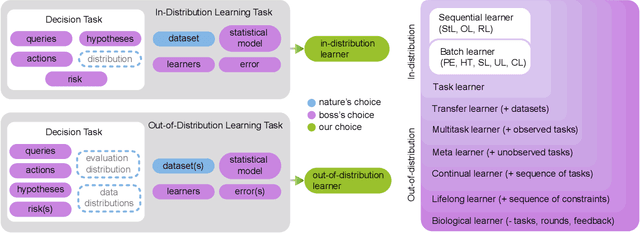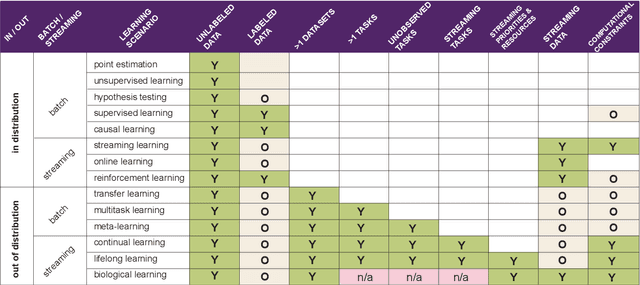Towards a theory of out-of-distribution learning
Paper and Code
Oct 07, 2021

What is learning? 20$^{st}$ century formalizations of learning theory -- which precipitated revolutions in artificial intelligence -- focus primarily on $\mathit{in-distribution}$ learning, that is, learning under the assumption that the training data are sampled from the same distribution as the evaluation distribution. This assumption renders these theories inadequate for characterizing 21$^{st}$ century real world data problems, which are typically characterized by evaluation distributions that differ from the training data distributions (referred to as out-of-distribution learning). We therefore make a small change to existing formal definitions of learnability by relaxing that assumption. We then introduce $\mathbf{learning\ efficiency}$ (LE) to quantify the amount a learner is able to leverage data for a given problem, regardless of whether it is an in- or out-of-distribution problem. We then define and prove the relationship between generalized notions of learnability, and show how this framework is sufficiently general to characterize transfer, multitask, meta, continual, and lifelong learning. We hope this unification helps bridge the gap between empirical practice and theoretical guidance in real world problems. Finally, because biological learning continues to outperform machine learning algorithms on certain OOD challenges, we discuss the limitations of this framework vis-\'a-vis its ability to formalize biological learning, suggesting multiple avenues for future research.
 Add to Chrome
Add to Chrome Add to Firefox
Add to Firefox Add to Edge
Add to Edge